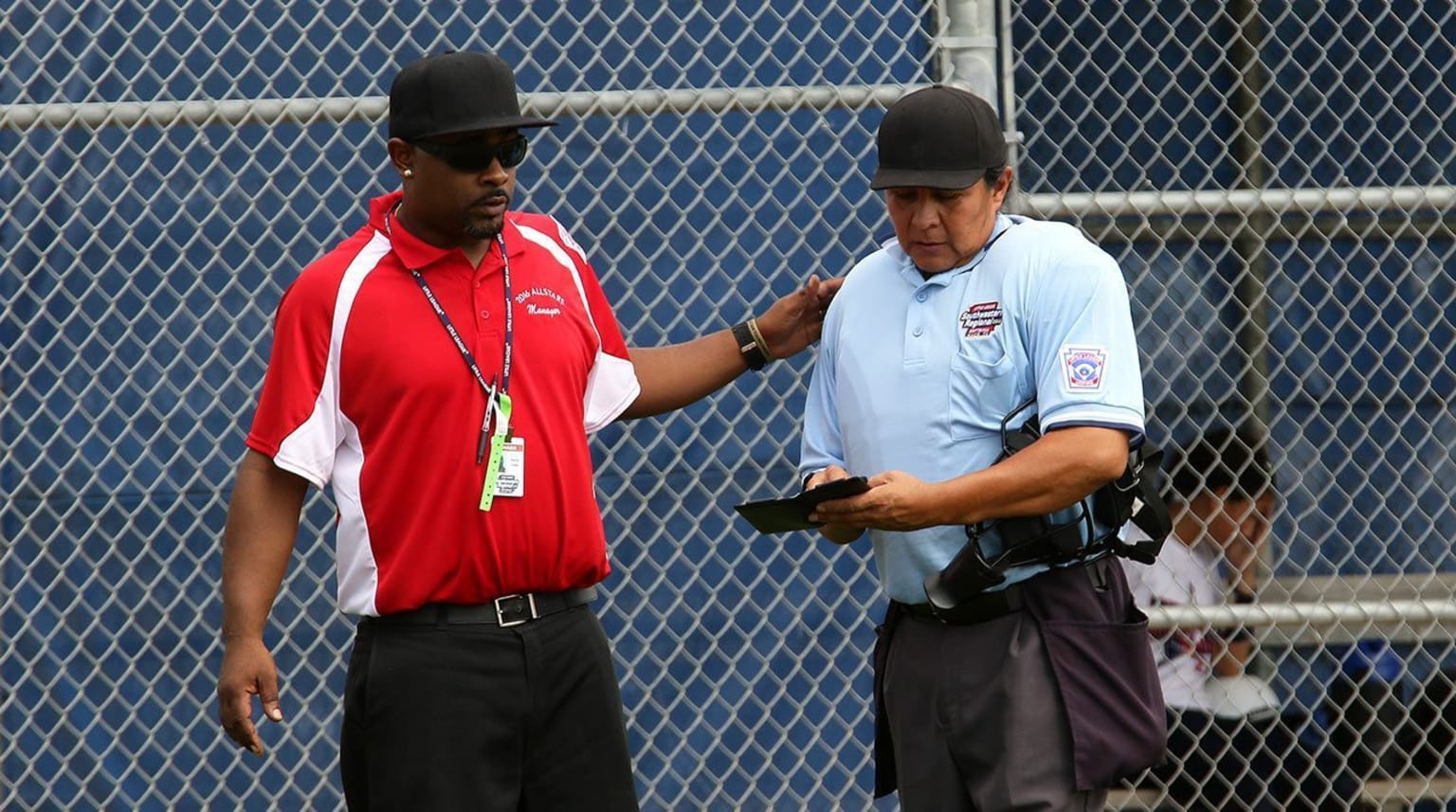
Throughout the regular season, a protest situation may occur. When a protest does occur, what happens, and where does it go?
Protesting a regular season game is outlined in Rule 4.19. A league’s Protest Committee reviews protests that involve violations or interpretations of a playing rule, the use of an ineligible pitcher, or the use of an ineligible player. Protest on decisions involving an umpire’s judgment will not be considered. The protest committee will make a final decision on all protests. Little League Regional Centers are able to help provide rule interpretations, but will not make decision on a local league’s protest.
Any protest must be submitted by the manager to the umpire on the field first. The protesting manager (or in their absence, a coach or acting manager) shall immediately, and before any succeeding play begins, notify the umpire that the game is being played under protest. Following such notice, the umpire shall consult with the other umpire(s). If the umpire is convinced that the decision is in conflict with the rules, the umpire shall reverse that decision. If, however, after consultation, the umpire is convinced that the decision is not in conflict with the rules, said umpire shall announce that the game is being played under protest. Failure of the umpire to make such announcement shall not affect the validity of the protest. A protest made due to the use of an ineligible pitcher or player may be considered only if made to the umpire before the umpire(s) leave the field at the end of the game. Whenever it is found that an ineligible pitcher or player is being used, said pitcher shall be removed from the mound, or said player shall be removed from the game, and the game shall be continued under protest or not as the protesting manager decides.
Then the protest needs to be submitted in writing to the local League President within 24 hours. The Umpire-in-Chief is also required to submit a report immediately.
The local league protest committee shall be comprised of the League President, Player Agent, Umpire-in-Chief, and one or more other officers or directors who are not managers or umpires.
If the committee allows the protest, the game will resume from the exact point where the infraction incurred. The local league’s constitution will provide specific information on the protest committee procedures. This document will describe who serves on the protest committee and their roles and responsibilities.
Districts that have interleague agreements, or run programs for Senior League Softball will have a protest committee structure similar to those of a local league.
The full protest process can be found in Rule 4.19. Remember, once the Little League International Tournament Begins, authority is solely vested in the Little League International Tournament Committee.